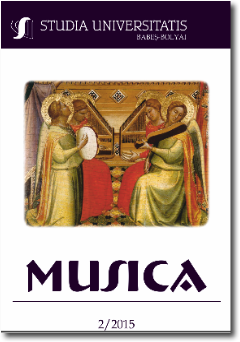ALTERNATIVES IN CONTEMPORARY OPERA STAGING. HÄNSEL AND GRETEL BY ENGELBERT HUMPERDINCK AND THE INPUT OF THE TECHNICAL DIRECTOR
ALTERNATIVES IN CONTEMPORARY OPERA STAGING. HÄNSEL AND GRETEL BY ENGELBERT HUMPERDINCK AND THE INPUT OF THE TECHNICAL DIRECTOR
Author(s): Diana TodeaSubject(s): Music
Published by: Studia Universitatis Babes-Bolyai
Keywords: opera; staging; opera staging director; traditional view on staging; technical director
Summary/Abstract: Until around 1940, the complex work of opera staging was divided between orchestra conductors, designers and technical directors. Gradually, however, staging became “a passion (...) for critics, aesthetes, and scholars, an ambition for leading actors, and an incessant problem for the directors of opera houses." There was a constant need for the emergence of directing specialists in the artistic environment, and their role became increasingly flexible in the period immediately following World War II. Nowadays, opera directors are virtual creators having multiple options at hand with regard to staging. They can choose from classical, traditional staging, where observing the intentions of the author is a prerequisite, to a contemporary, more up-to-date directing approach, where the subject of the opera is transposed into a different time and space, implying, at the same time, a reinterpretation and adaptation of codes. They can also resort to the so-called "modern", radical directing, where opera itself becomes a mere tool used to comply with the director's intentions. We consider the staging of the opera Hänsel and Gretel at the Romanian National Opera House in Cluj-Napoca between 2006 and 2015 as our personal follow out to the traditional staging practice, as a technical director.
Journal: Studia Universitatis Babes-Bolyai - Musica
- Issue Year: 60/2015
- Issue No: 2
- Page Range: 63-83
- Page Count: 21
- Language: English

